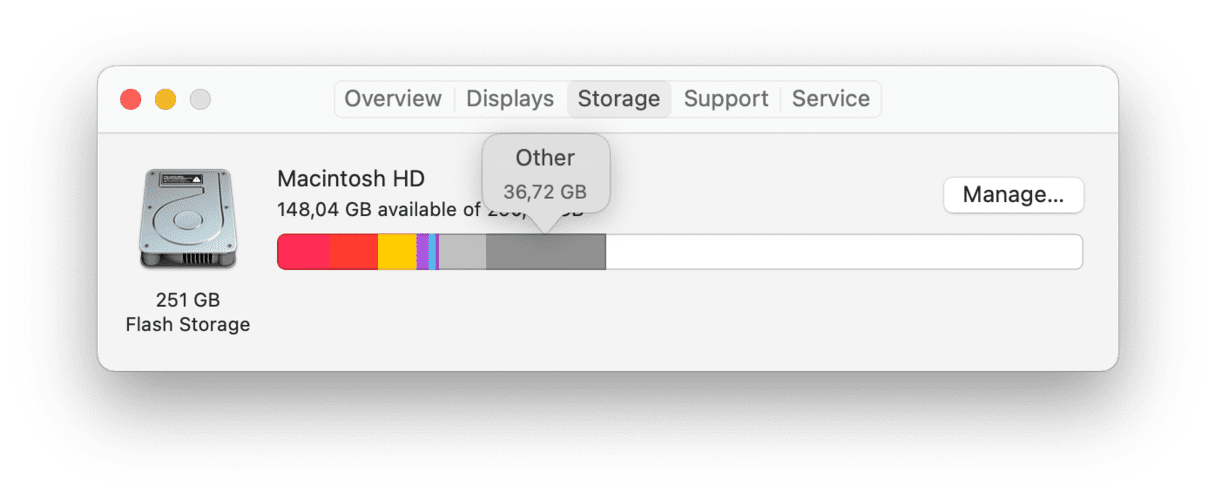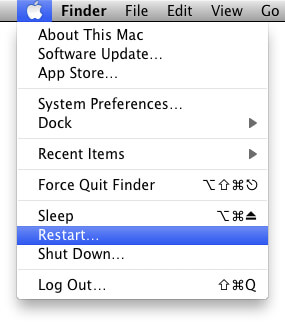I have a confession to make: I am really good at managing my storage space. Full disclosure: on my private devices. I would go for an 8GB iPhone if there was one, as I don’t have many apps and games installed, and I’m not a huge photo nerd.
How To Free Up Other Storage On Mac Desktop
That sadly doesn’t translate to my work from my private life. I’m not lucky enough to have a work computer and a private computer — like I have two smartphones — and this is where it becomes a problem. A storage problem.
Save space on your Mac by storing your content in iCloud, using built-in tools to find and remove large files, or manually deleting apps, files, and more.
Checking your storage on Mac isn't difficult – but managing it can be. One of the more curious storage compartments is the 'other' storage on Mac, which sounds like a catch-all for files that can't be labeled properly. And that's sort of true! But the other volumes in container can get full, and reduce the Mac storage Other space for your Mac. Sep 28, 2021 The limitations of Mac storage often create a problem that prevents the Mac from running smoothly, which results in inconvenience to every user. With that said, we take a look at the four ways to free up the storage space on the device manually, according to Apple. How to Free Up Storage Space Manually on Your Mac 1. Step 1: Select a Location. Install and launch Recoverit 8.0 on your Mac, whenever you wish to get back your lost files. On its home, you need to select a location to scan. This can be Mac's entire storage, a partition, or even a particular folder. You can browse to a specific location of your choice as well.
Emails, attachments, documents, pictures, backups, drafts, sheets, videos pile up really fast. You know it gets serious the moment you realize that anything you want to delete in order to free up storage space is absolutely necessary to hold on to. Like someone lost at sea gasping for air, you’re desperately trying to find those extra megabytes and gigs (if you’re lucky) to get you going for another month or so.
What is Other in Mac storage?
Some of you might know this, most of you might not. When you’re analyzing your Mac storage, macOS visually represents stuff that’s eating space up. You might see color-coded bars for Documents, Apps, Mail, Photos, and System, but there’s a sizeable chunk labeled Other, represented in gloomy dark gray.
It usually tends to be rather big, in some cases among the biggest space wasters on your Mac. What is it?
To put it simply, macOS puts all files which don’t fall under the aforementioned categories inside the Other storage. These files can vary in type and can be anything from temporary files to macOS system files, plugins, extensions, archive (zip) files, and even documents like PDFs, docs, or Photoshop files.
Often times you can come across files you don’t even recognize neither by name nor by type, but you realize it weighs several hundred megs, enough to get rid of that low space notification for a day or two.
Where is the Other Storage on Mac?
You are right to ask this question because Other Storage is hidden from you. Why? Because this Other Storage can, and it most likely does, contain critical files that can break some apps, and, in some instances, your Mac.

If you fire up Finder, click Go in the menu, and go to~/Library/Caches, that’s where you find your Other Storage. All those folders make up your Other Storage, and take up all that space.

CleanMyMac X
- Delete megatons of junk, malware, and make your Mac faster and more organized.
How to delete Other Storage on Mac
Well, there’s a hard (and risky) way, and there’s an easy way.
The risky way first requires you to identify or find large Other Storage files. While the process is fairly simple, the challenge is knowing what’s safe to delete and what’s not.
Follow these steps to find files:
- Press Command-F on your Desktop;
- Select This Mac on the top left next to Search;
- Click the dropdown menu field under Search, and select Other;
- In the Search Attributes list, check File Size and File Extension;
- Here you can instruct Search what type of file (PDF, Photoshop, etc.) to look for, and what size threshold to report beyond (works best if you choose “greater than”).
Carefully review the results and delete accordingly.
…or you can do this the easy way, with Macpaw’s CleanMyMac X. The steps are easy and safe:

- Download and install CleanMyMac X;
- Chose the option Large and Old files, towards the bottom of the list on the left, and hit Scan;
- The software categorizes everything it deems worthy to be part of the list, so you can easily go through categories and files;
- Delete the files you no longer need.
Pro tip: Sort results by size to be more efficient in deleting one larger file rather than 10 smaller ones.
CleanMyMac X can also help you get rid of temporary files and caches that are safe to delete in order to free up space while keeping your Mac in top-notch shape. The procedure is similar but, this time, you select the System Junk from the list, hit Scan, and let it do its job. Once the scan is complete, you just hit Clear and you’re done! We’ve detailed this in a previous article you can read here.
Not just an effective Mac cleaner
CleanMyMac X also offers the option to delete other files, like browser extensions, disk images, installation files, etc. It offers an all-around solution to reclaim space on your Mac.
Not only that, but the software offers Malware removal, a Privacy checkup, optimizations, maintenance, pretty much a Swiss army knife to keep your Mac happy.
Remember: just as it is important to clean your Mac on the outside, it’s also important to clean your Mac on the inside. If gaining back that performance and wasted storage space come along as a side effect (and they will), you’re winning!
Go check CleanMyMac X out over at Macpaw!
CleanMyMac X
- Delete megatons of junk, malware, and make your Mac faster and more organized.
We thank Macpaw for sponsoring this post!
The Optimized Storage features of your Mac help you save storage space by storing your content in iCloud and making it available on demand:
- When storage space is needed, files, photos, movies, email attachments, and other files that you seldom use are stored in iCloud automatically.
- Each file stays right where you last saved it, and downloads when you open it.
- Files that you’ve used recently remain on your Mac, along with optimized versions of your photos.
If you haven't yet upgraded to macOS Sierra or later, learn about other ways to free up storage space.
Find out how much storage is available on your Mac
Choose Apple menu > About This Mac, then click Storage. Each segment of the bar is an estimate of the storage space used by a category of files. Move your pointer over each segment for more detail.
Click the Manage button to open the Storage Management window, pictured below.
Manage storage on your Mac
The Storage Management window offers recommendations for optimizing your storage. If some recommendations are already turned on, you will see fewer recommendations.
Store in iCloud
Click the Store in iCloud button, then choose from these options:
- Desktop and Documents. Store all files from these two locations in iCloud Drive. When storage space is needed, only the files you recently opened are kept on your Mac, so that you can easily work offline. Files stored only in iCloud show a download icon , which you can double-click to download the original file. Learn more about this feature.
- Photos. Store all original, full-resolution photos and videos in iCloud Photos. When storage space is needed, only space-saving (optimized) versions of photos are kept on your Mac. To download the original photo or video, just open it.
- Messages. Store all messages and attachments in iCloud. When storage space is needed, only the messages and attachments you recently opened are kept on your Mac. Learn more about Messages in iCloud.
Storing files in iCloud uses the storage space in your iCloud storage plan. If you reach or exceed your iCloud storage limit, you can either buy more iCloud storage or make more iCloud storage available. iCloud storage starts at 50GB for $0.99 (USD) a month, and you can purchase additional storage directly from your Apple device. Learn more about prices in your region.
Optimize Storage
Click the Optimize button to save space by automatically removing watched movies and TV shows. When storage space is needed, movies or TV shows that you purchased from Apple and already watched are removed from your Mac. Click the download icon next to a movie or TV show to download it again.

Your Mac will also save space by keeping only recent email attachments on this Mac when storage space is needed. You can manually download any attachments at any time by opening the email or attachment, or saving the attachment to your Mac.
Optimizing storage for movies, TV shows, and email attachments doesn't require iCloud storage space.
Empty Trash Automatically
Empty Trash Automatically permanently deletes files that have been in the Trash for more than 30 days.
Reduce Clutter
Reduce Clutter helps you identify large files and files you might no longer need. Click the Review Files button, then choose any of the file categories in the sidebar, such as Applications, Documents, Music Creation, or Trash.
You can delete the files in some categories directly from this window. Other categories show the total storage space used by the files in each app. You can then open the app and decide whether to delete files from within it.
/img_11.png?width=833&name=img_11.png)
Learn how to redownload apps, music, movies, TV shows, and books.
How To Free Up Other Storage On Mac Hard Drive
Where to find the settings for each feature
How To Free Up Other Storage On Macbook Air
The button for each recommendation in the Storage Management window affects one or more settings in other apps. You can also control those settings directly within each app.
- If you're using macOS Catalina or later, choose Apple menu > System Preferences, click Apple ID, then select iCloud in the sidebar: Store in iCloud turns on the Optimize Mac Storage setting on the right. To turn off iCloud Drive entirely, deselect iCloud Drive.
- If you're using macOS Mojave or earlier, choose Apple menu > System Preferences, click iCloud, then click Options next to iCloud Drive. Store in iCloud turns on the Desktop & Documents Folders and Optimize Mac Storage settings.
- In Photos, choose Photos > Preferences, then click iCloud. Store in iCloud selects iCloud Photos and Optimize Mac Storage.
- In Messages, choose Messages > Preferences, then click iMessage. Store in iCloud selects Enable Messages in iCloud.
- If you're using macOS Catalina or later, open the Apple TV app, choose TV > Preferences from the menu bar, then click Files. Optimize Storage selects “Automatically delete watched movies and TV shows.”
- In you're using macOS Mojave or earlier, open iTunes, choose iTunes > Preferences from the menu bar, then click Advanced. Optimize Storage selects “Automatically delete watched movies and TV shows.”
- In Mail, choose Mail > Preferences from the menu bar, then click Accounts. In the Account Information section on the right, Optimize Storage sets the Download Attachments menu to either Recent or None.
Empty Trash Automatically: From the Finder, choose Finder > Preferences, then click Advanced. Empty Trash Automatically selects “Remove items from the Trash after 30 days.”
Other ways that macOS helps automatically save space
With macOS Sierra or later, your Mac automatically takes these additional steps to save storage space:
- Detects duplicate downloads in Safari, keeping only the most recent version of the download
- Reminds you to delete used app installers
- Removes old fonts, languages, and dictionaries that aren't being used
- Clears caches, logs, and other unnecessary data when storage space is needed
How to free up storage space manually
Even without using the Optimized Storage features described in this article, you can take other steps to make more storage space available:
- Music, movies, and other media can use a lot of storage space. Learn how to delete music, movies, and TV shows from your device.
- Delete other files that you no longer need by moving them to the Trash, then emptying the Trash. The Downloads folder is good place to look for files that you might no longer need.
- Move files to an external storage device.
- Compress files.
- Delete unneeded email: In the Mail app, choose Mailbox > Erase Junk Mail. If you no longer need the email in your Trash mailbox, choose Mailbox > Erase Deleted Items.
Learn more
- The Storage pane of About This Mac is the best way to determine the amount of storage space available on your Mac. Disk Utility and other apps might show storage categories such as Not Mounted, VM, Recovery, Other Volumes, Other, Free, or Purgeable. Don't rely on these categories to understand how to free up storage space or how much storage space is available for your data.
- When you duplicate a file on an APFS-formatted volume, that file doesn't use additional storage space on the volume. Deleting a duplicate file frees up only the space required by any data you might have added to the duplicate. If you no longer need any copies of the file, you can recover all of the storage space by deleting both the duplicate and the original file.
- If you're using a pro app and Optimize Mac Storage, learn how to make sure that your projects are always on your Mac and able to access their files.